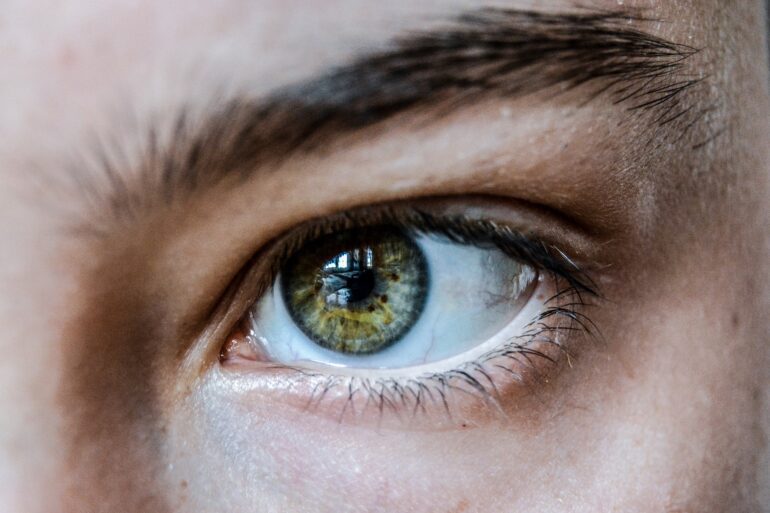TL;DR:
- An AI model has been developed and made public by the Japanese Ophthalmological Society and the National Institute of Informatics to estimate a person’s age based on fundus images.
- The model leverages data from the Japan Ocular Imaging Registry (JOIR) and has the potential to revolutionize eye disease research.
- Deep learning and AI advancements have resulted in significant progress in image recognition.
- The National Institute of Informatics (NII) and the Japan Ophthalmological Society have established research centers and databases to promote medical AI research and development.
- The recent advancements in AI using medical images have shown the ability to estimate an individual’s condition, including age, gender, smoking status, and blood glucose level.
- The AI model is freely available to researchers in medicine and informatics and has been evaluated as having a strong correlation with biological age.
- Retinal images can provide information that can be used to assess the risk of cardiovascular diseases and cognitive disorders. The AI model developed could potentially uncover new biomarkers related to the probability of developing diseases.
- Researchers hope to unlock the full potential of the AI model by utilizing it in disease control and epidemiological studies.
Main AI News:
In a groundbreaking collaboration, the Japanese Ophthalmological Society and the National Institute of Informatics have teamed up to bring forth a cutting-edge AI model. This innovative tool leverages data from the Japan Ocular Imaging Registry (JOIR) to estimate an individual’s age through analysis of fundus images. JOIR, a national ocular database, has been established with the support of the Japanese Agency for Medical and Health Sciences (AMED).
As reported by the Resource Organization of Information and Systems (ROIS), this AI model has the potential to revolutionize eye disease research. By enabling researchers to estimate age with a high degree of accuracy, the AI model opens up new avenues for discovering biomarkers that are related to susceptibility to eye diseases. It is anticipated that this AI model will play a critical role in advancing eye disease research in the years to come.
The recent advancements in deep learning and AI have yielded significant results in image recognition. According to the Resource Organization of Information and Systems (ROIS), this breakthrough has surpassed human accuracy in many cases.
In response to this trend, the National Institute of Informatics (NII) established the Research Center for Medical Bigdata in 2017 with the goal of developing medical AI assistance. NII has also created a database of medical image big data and operates a cloud infrastructure for conducting research and development on medical support AI.
The Japan Ophthalmological Society took similar steps in 2019, establishing the General Incorporated Association Japan Ocular Imaging Registry (JOIR) to collect ocular data from facilities across the country, with the aim of promoting and supporting medical AI research and development. The anonymized ocular images in the JOIR database are sent to NII’s cloud infrastructure for further development using the computing resources available there.
As the release notes, age has a profound impact on the onset of various diseases, including cancer, lifestyle diseases, and dementia. Recent advancements in AI using medical images have demonstrated the ability of AI to estimate an individual’s condition based on these images. For instance, AI can predict a person’s age, gender, smoking status, and blood glucose level from a retinal image. This information has the potential to be used not only in ophthalmology but also in medical research on various systemic diseases.
However, previous AI developments in this area have not been made publicly available, limiting their use in other research. To address this, the Japan Ophthalmological Society collaborated with NII to develop an AI model that estimates a person’s age based on fundus images, which is now available for free to researchers. This collaboration is expected to pave the way for new discoveries and advancements in the field of eye disease research.
The AI model developed by the Japanese Ophthalmological Society and the National Institute of Informatics was created using 8,149 retinal photographs of healthy individuals between the ages of 18 and 84 as training data. The biological age served as the ground truth in this deep learning study. The results showed an average absolute error of 2.39 years between the estimated age and the biological age.
This “Retinal Age Estimation Model” is now available free of charge to researchers in the fields of medicine and informatics and has been evaluated as having a strong correlation with biological age. The release notes that classical epidemiological studies, without the use of AI, have demonstrated the potential of using information obtained from retinal images to estimate the risk of cardiovascular diseases and cognitive disorders.
While the medical value of the age estimated from retinal images is currently unclear, researchers believe that this achievement could lead to the discovery of new biomarkers related to the likelihood of developing diseases. By utilizing the model in disease control and epidemiological studies, researchers hope to unlock its full potential and bring new insights to the field of eye disease research.
Conlcusion:
The recent advancements in AI and deep learning have led to significant progress in image recognition and medical AI research. The collaboration between the Japanese Ophthalmological Society and the National Institute of Informatics has resulted in the development of a publicly available AI model that can estimate a person’s age based on fundus images. This tool has the potential to revolutionize eye disease research by opening up new avenues for discovering biomarkers related to disease susceptibility.
The AI model has been evaluated as having a strong correlation with biological age and is freely available to researchers in medicine and informatics. With the potential to uncover new biomarkers related to disease likelihood, researchers hope to unlock the full potential of this AI model in disease control and epidemiological studies. The availability of this AI model represents a significant step forward in the field of eye disease research and the broader healthcare industry.

